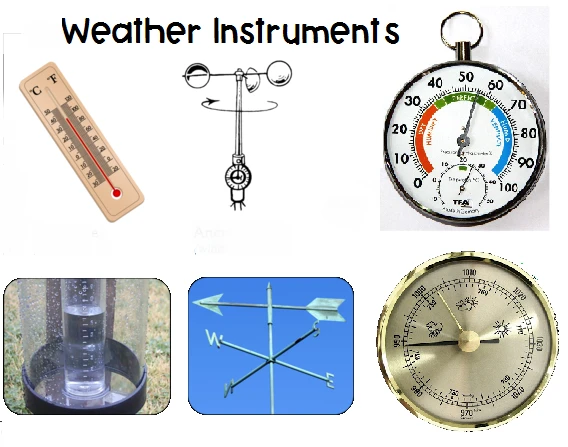
# Weather Instruments: Tools for Measuring Atmospheric Conditions
## Introduction to Weather Instruments
Weather instruments are essential tools used by meteorologists, scientists, and weather enthusiasts to measure and record various atmospheric conditions. These instruments provide valuable data that helps us understand weather patterns, predict changes, and prepare for severe conditions.
## Common Weather Instruments and Their Functions
### 1. Thermometer
The thermometer is perhaps the most familiar weather instrument. It measures air temperature, typically in degrees Celsius or Fahrenheit. Modern thermometers use various technologies, including mercury, alcohol, or digital sensors.
### 2. Barometer
A barometer measures atmospheric pressure, which is crucial for weather forecasting. Changes in air pressure often indicate approaching weather systems. There are two main types: mercury barometers and aneroid barometers.
### 3. Hygrometer
This instrument measures humidity – the amount of water vapor in the air. Hygrometers help predict precipitation and are important for understanding comfort levels and potential health impacts.
### 4. Anemometer
Anemometers measure wind speed. The most common type has three or four cups that rotate with the wind, while more advanced versions use ultrasonic technology for precise measurements.
### 5. Wind Vane
Also known as a weather vane, this instrument shows wind direction. It typically has an arrow that points into the wind, helping meteorologists track weather system movements.
### 6. Rain Gauge
A rain gauge measures precipitation amounts over a set period. Simple versions use a graduated cylinder, while more sophisticated models can record data electronically.
### 7. Pyranometer
This specialized instrument measures solar radiation. It’s particularly important for agricultural applications, solar energy studies, and climate research.
## Advanced Weather Measurement Systems
Modern weather stations often combine multiple instruments into integrated systems. These automated weather stations can measure and record various parameters simultaneously, transmitting data to central databases for analysis.
Some advanced systems include:
– Ceilometers for measuring cloud height
– Disdrometers for analyzing precipitation particle size and velocity
– Lightning detectors for tracking electrical storms
– Weather balloons (radiosondes) for upper-atmosphere measurements
## The Importance of Weather Instruments
Accurate weather data is vital for numerous sectors:
– Aviation safety and flight planning
– Agricultural planning and crop management
– Disaster preparedness and early warning systems
– Climate change research
– Outdoor event planning
– Energy production and distribution
## Maintaining Weather Instruments
For accurate measurements, weather instruments require:
– Regular calibration against known standards
– Proper siting (away from obstructions and heat sources)
– Routine maintenance and cleaning
– Protection from extreme conditions when possible
## Conclusion
Weather instruments form the foundation of our understanding of atmospheric conditions. From simple thermometers to sophisticated satellite systems, these tools continue to evolve, providing increasingly precise data that helps us navigate our daily lives and prepare for future weather events.
Keyword: instruments of the weather